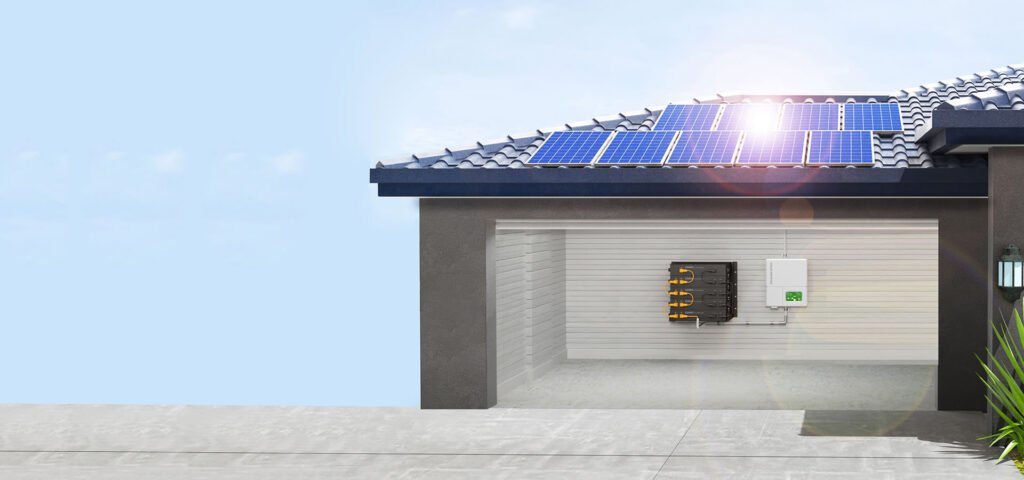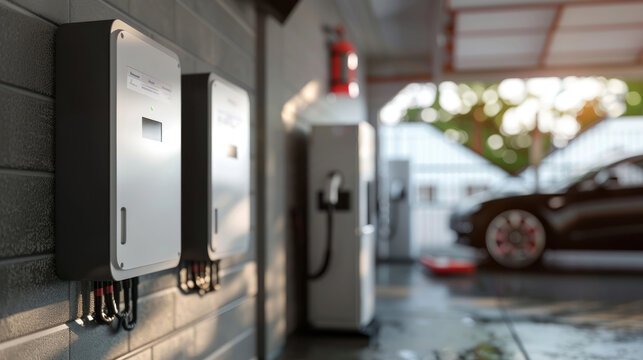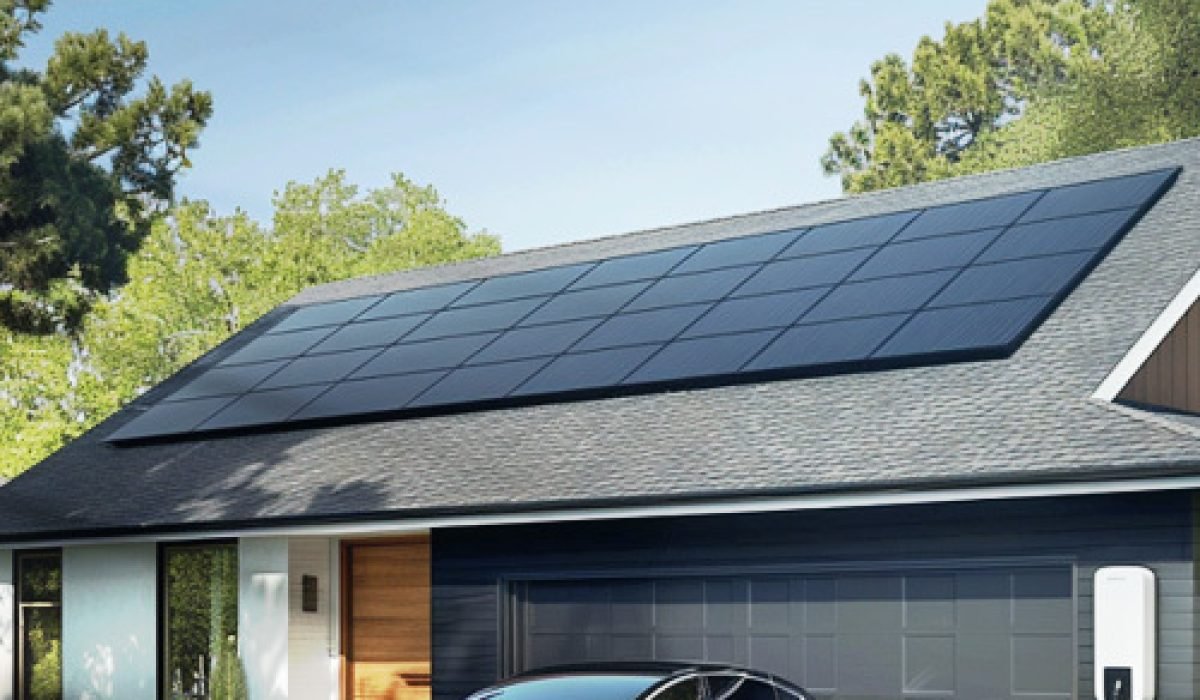Residential energy storage is the use of rechargeable home battery systems to store electricity for later use—especially during power outages, peak pricing periods, or at night when solar panels aren’t generating power. These systems help households become more energy independent, reduce electricity bills, and optimize the use of solar power or other renewables.
Whether you’re considering a new solar-plus-storage system or looking to add batteries to your existing setup, this guide will explain how it all works—clearly, practically, and from real-world experience in the field.
Understanding Residential Energy Storage

What is the Definition of Residential Energy Storage Systems?
Residential energy storage refers to systems that store electricity for home use, typically using lithium-ion batteries charged by solar panels or the utility grid. These systems provide backup power, help reduce grid dependency, and allow homeowners to manage energy usage more efficiently.
At the core, it’s about storing excess energy for when you need it most.
What is the Core Purpose and Benefits of Home Battery Storage?
Home battery storage systems are designed to maximize energy efficiency, provide backup power, and increase self-reliance. Here's how:
- Energy Management: Store excess solar energy generated during the day and use it during the night.
- Backup During Outages: Maintain power during grid failures or load shedding events.
- Increased Self-Consumption: Maximize use of your own solar energy rather than exporting it at low rates to the grid.
✅ Key takeaway: A residential battery turns your home into a mini power plant—more control, more savings, and greater peace of mind.
How Does a Home Battery Energy Storage System Work?
What Are the Key Components of Residential Energy Storage Systems?
A home energy storage system includes several integrated components that work together to store and supply energy efficiently:
- Battery Cells and Modules: These are the actual energy storage units.
- Battery Racks/Banks: Physical structures that house and organize multiple battery modules.
- Inverter: Converts direct current (DC) from the batteries into alternating current (AC) used by household devices.
- Battery Management System (BMS): Monitors and protects the battery, managing charge and discharge cycles safely.
💡 Insight from the field: We often find that the inverter and BMS quality make or break a system’s real-world reliability.
What Is the Step-by-Step Home Battery Storage Process?
The process of storing and using energy in a residential battery system generally follows these steps:
- Energy Generation: Solar panels or the grid supply electricity.
- Battery Charging: Excess electricity charges the home battery.
- Energy Storage: The battery holds the energy until needed.
- Usage: When demand exceeds solar generation (e.g., at night or during a blackout), the system draws from the battery.
- Inverter Role: The inverter ensures the stored DC power becomes usable AC electricity for appliances.
- Smart Metering: Some setups optimize charging/discharging based on grid rates or sunlight forecasts.
✅ Key takeaway: Your battery quietly works in the background, shifting energy to when it’s most valuable.
Adding Batteries to an Existing Solar System

Can You Retrofit Home Batteries to an Existing Solar Setup?
Yes, many modern home batteries are designed for retrofitting to existing solar systems. However, there are important compatibility factors:
- Inverter Compatibility: Your existing inverter may need to be replaced or paired with a hybrid inverter.
- System Configuration: AC-coupled batteries are easier to retrofit than DC-coupled ones.
- Energy Flow Control: Smart energy management tools help manage both generation and storage seamlessly.
What Should Homeowners Consider Before Installation?
Before installing a battery to your existing system, consider:
- Age and condition of your current solar panels/inverter.
- Desired backup capacity (essential loads only vs. whole home).
- Budget and expected return on investment.
- Available installation space (indoor/outdoor, ventilation, safety).
👷 Field note: In one Nairobi project, we helped a homeowner add a 5kWh battery to their 4-year-old solar setup—resulting in 85% grid independence within two months.
How Much Energy Can a Home Battery Storage System Store?
What is Residential Battery Storage Capacity?
Battery capacity is measured in kilowatt-hours (kWh), indicating how much electricity can be stored and used. Most residential systems fall in the 5–15 kWh range.
| Battery Size (kWh) | Typical Usage Duration | Common Applications |
|---|---|---|
| 5 kWh | 3–6 hours | Lights, fridge, WiFi |
| 10 kWh | 6–12 hours | Essentials + TV, fan |
| 15+ kWh | 12–24 hours | Whole home backup |
What Can a Home Battery Storage System Power?
Here are examples of typical loads and how long they can run on stored battery power:
- Refrigerator: ~100W → up to 24 hrs on 2.4 kWh
- LED Lighting (5 rooms): ~100W total → 12 hrs on 1.2 kWh
- WiFi Router + Laptop: ~50W → 20 hrs on 1 kWh
- TV + Fan: ~150W → 6 hrs on 1 kWh
✅ Key takeaway: A 10 kWh battery can comfortably run key essentials for 8–12 hours during a blackout.
Benefits of Residential Energy Storage Systems

How Does Residential Energy Storage Support Energy Independence?
Residential battery systems help households rely less on the national grid and more on self-generated power. This is especially critical in regions with unreliable electricity or rising tariffs.
- Run essentials during load shedding
- Avoid peak pricing
- Choose when to use stored or grid power
How Do Batteries Save Costs and Improve Efficiency?
Storing and using your own solar power is more economical than buying electricity from the grid—especially in areas with tiered or time-of-use pricing.
- Reduce or eliminate your electricity bill
- Use excess solar generation instead of wasting it
- Pair with smart meters to optimize energy usage
📉 Case in point: A residential client in Lusaka slashed their monthly bill from $90 to $28 by storing and timing their solar usage smartly.
What is the Environmental Impact of Home Battery Storage?
By storing renewable energy and reducing grid demand, home batteries help cut your carbon footprint. Each kWh of solar stored and used equals:
- Fewer emissions from fossil-fueled grid supply
- Less need for diesel generators during outages
- A tangible step toward national clean energy targets
✅ Key takeaway: Energy storage isn’t just smart—it’s sustainable.
Frequently Asked Questions About Home Battery Storage
Is Residential Battery Storage Right for My Home?
If you experience frequent power cuts, have solar panels, or want to reduce electricity bills, the answer is likely yes.
How Long Does a Typical Home Battery Last During a Blackout?
Depending on the size and load, batteries can last from 4 to 24 hours. A 10 kWh system running essential loads could power a home for 8–12 hours.
Can Battery Capacity Be Upgraded Later?
Yes, many systems are modular, allowing future expansion by adding extra battery units.
Is Home Battery Storage Cost-Effective for Most Families?
In high-tariff or unreliable-grid regions, the payback period can be under 5 years, especially when combined with solar.
Summary: Key Facts About Residential Energy Storage
- Definition: Home battery systems store electricity for later use.
- How It Works: Energy is stored from solar/grid and used when needed.
- Components: Includes batteries, inverter, BMS, and smart meters.
- Compatibility: Batteries can be added to existing solar setups.
- Capacity: Most systems store 5–15 kWh, powering essentials for hours.
- Benefits: Lower bills, backup during outages, increased energy independence.
- Environmental Value: Reduces emissions and supports clean energy.
🔧 Action Steps for Homeowners
- ✅ Assess your energy usage and outage frequency.
- ✅ Check compatibility with your current solar system.
- ✅ Consult a licensed installer to plan capacity and placement.
- ✅ Start small if unsure—many systems are scalable.
Ready to take control of your energy? Start with storage—it’s the smartest upgrade a solar home can make.


